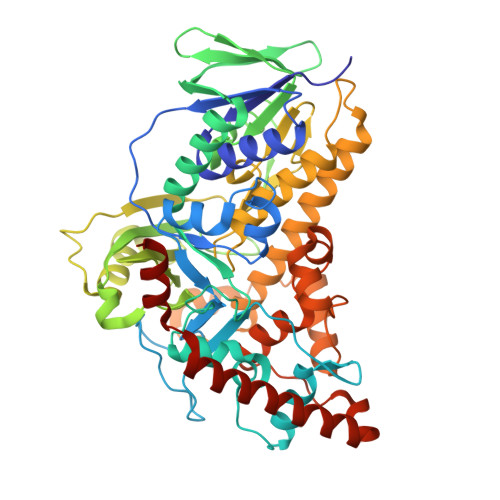Structural Basis of Regioselective Bromination of Tricyclic Tryptoline by the Tryptophan Halogenase Thal.
Bork, S., Besse, C., Sewald, N., Niemann, H.H.(2025) Chembiochem 26: e202500246-e202500246
- PubMed: 40407410
- DOI: https://doi.org/10.1002/cbic.202500246
- Primary Citation of Related Structures:
8RS4 - PubMed Abstract:
Flavin-dependent halogenases (FDHs) carry out substrate-specific and regioselective halogenation reactions in the biosynthesis of various halogenated natural compounds. Several FDHs convert non-native substrates in vitro. However, obtaining experimental structures of FDHs with non-native substrates remains challenging and docking often produces ambiguous results. Hence, there is a lack of data on how non-native substrates bind to FDHs. Here, we show that the tryptophan 6-halogenase Thal efficiently brominates the tricyclic indole derivative tryptoline (1,2,3,4-tetrahydro-β-carboline) with high regioselectivity. The two point mutations G113S and G469S improve regioselectivity even further. A crystal structure reveals how tryptoline binds to the active site of Thal. The halogenated carbons are located close to the catalytic lysine and the NH of tryptoline's tetrahydropyridine is positioned like the amino group of the native substrate tryptophan. The substrate binding loop of Thal is closed, again resembling the binding of tryptophan. Our work extends the range of non-native substrates accepted by Thal, confirming the versatility of this FDH. Moreover, it is a rare example of an FDH structure in complex with a non-native substrate.
- Bielefeld University: Universitat Bielefeld, Department of Chemistry, Universitätsstraße 25, 33615, Bielefeld, GERMANY.
Organizational Affiliation:




















